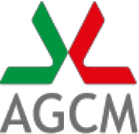Preservation of umbilical cord blood: companies modify their advertising following Antitrust intervention
PRESS RELEASE
PRESS RELEASE
PRESERVATION OF UMBILICAL CORD BLOOD: COMPANIES MODIFY ADVERTISING IN RESPONSE TO ANTITRUST PRESSURE. PARENTS NOW PROVIDED CORRECT AND TRANSPARENT INFORMATION ABOUT STEM CELL POTENTIALITIES
The action was initiated last year when six procedures for an equal number of companies were opened and then closed with the acceptance of commitments to improve the communications directed at consumers. In recent weeks the Authority verified the implementation of these commitments and succeeded in obtaining corrective measures in the consumer-oriented communications of nine similar companies.
This concerns of a revision of the information targeted at parents who are considering looking abroad to preserve the umbilical cord blood of their newborns. Thanks to Antitrust pressuring, companies in this industry have modified their websites and are drafting new advertising brochures to provide clear and transparent explanations of the real therapeutic applications for the hematopoietic stem cells of umbilical cords for autologous (self-transplant) or intra-family purposes.
The Authority's action began last year when it opened six different investigatory proceedings for an equal number of companies. The proceedings came to a close with the Antitrust's acceptance of the commitments presented by these companies and designed to provide correct information about the real potential cures associated with the use of stem cells that are extracted from umbilical cord blood and preserved abroad. In recent weeks the Authority verified the actual implementation of the promised modifications.
The Authority obtained analogous modifications by nine other companies - six based in Italy (BiotechSol, Cells4bank, Cord Blood Center, Famicord, InnovaStem, Smart Cells Italia) and three abroad (Bioscience Institute and In Scientia Fides in San Marino; Swiss Stem Cell Bank in Lugano).
According to the Antitrust, the new formulation of the messages and the body of information used by the vast majority of the companies in this sector enables parents who are considering whether to engage cord blood preservation services abroad to make well-informed decisions. They now have access to all of the fact-based elements as well as the pros and cons of more contentious issues related to this subject's timely and rapidly-developing nature as well as the delicacy and technical nature of issues related to health and the cures for different pathologies. In specific, every company that responded to the Authority's requests has impressed their communications with the criteria of prudence and completeness of information with regard to the spectrum of pathologies that can actually be treated, the true utility of the preserved samples purposes of transplants and the actual numbers of transplants performed to date. They clarify, furthermore, that the preservation of cord blood for medical purposes would only be useful for up to 15-16 years, and that even should the need to use the preserved samples arise, special permission from the Ministry of Health would still be required to bring them back into Italy.
The Authority's action is set within the context of a rapidly expanding market governed by a regulatory framework that allows for the donation of umbilical cords to public facilities for purposes of medical care and research, but not for their preservation for purposes of private use.
Rome, 12 April 2012

